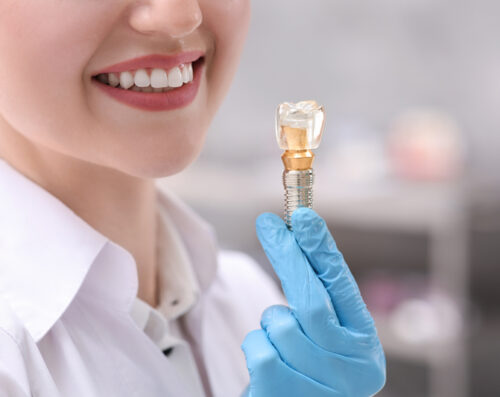Dental Bone Graft And Implant: Is It Always Needed?
Basics of implants — strong, natural tooth restoration with a metal post.

Losing a tooth raises two big questions: can I safely replace it with a dental implant, and will I need a dental bone graft and implant to make that work? This post explains what a dental bone graft and implant are, when a graft is necessary, when it isn’t, what the treatment timeline looks like, and how dentists decide the best route. By the end you’ll know which signs point to grafting, what alternatives exist, and what to ask your implant dentist.
What is a dental bone graft and implant?
A dental bone graft is a procedure that rebuilds or adds bone to the jaw where bone has been lost. A dental implant is a titanium post placed into the jaw to act like a tooth root. Together, a dental bone graft and implant let dentists restore the bone first (if needed) and then place an implant that’s stable enough to support a crown, bridge, or denture.
The difference between the graft and the implant
The graft rebuilds bone volume and shape. The implant replaces the root of the missing tooth and provides a strong anchor for the visible tooth. Both can be part of the same overall treatment, but they serve different roles.
Types of bone graft materials
– Autograft: bone taken from your own body (high success, extra surgical site). – Allograft: donated human bone (no second surgery, good success). – Xenograft: animal-derived bone (commonly bovine; good scaffold). – Synthetic: lab-made materials (no disease risk, varying strength). Each has pros and cons; your dentist will recommend one based on your health, needs, and preferences.
Why bone grafts are used with implants
When a tooth is lost, the jawbone in that area begins to shrink because it no longer receives normal forces from chewing. Over months or years this can leave too little bone to hold an implant safely. A dental bone graft and implant are used to restore the volume and strength needed so an implant can be placed and supported long term.
Benefits of combining grafts with implants
Combining grafts with implants usually improves implant success and stability. It helps you chew better, prevents nearby teeth from shifting, and restores a natural facial shape. In short, grafting helps the implant last longer and look better.
Signs you might need a dental bone graft and implant
You might need a graft when there’s been significant bone loss or other risk factors that make implant placement unsafe.
Common indicators
– You’ve had a missing tooth for a long time. – Your jaw looks thinner or your gums appear sunken where the tooth is missing. – Your dentist can’t place an implant securely during a clinical exam. – For upper back teeth, the sinus may be too close and need a sinus lift (a type of graft).
Diagnostic findings that suggest grafting
3D imaging like a CBCT scan can show low bone height or inadequate bone width around the missing tooth. If the scan shows less than the needed bone to hold the implant, a graft is usually recommended.
When a dental bone graft and implant may NOT be needed
Not everyone needs a graft. If enough bone remains where the tooth was removed, the implant can often be placed directly. In cases of early implant placement (right after extraction), the natural socket and surrounding bone may be sufficient without grafting.
Alternatives to graft + implant
If a graft is not an option or not desired, alternatives include: – A dental bridge (uses neighboring teeth for support). – A removable partial denture (non-surgical, lower cost). – Mini-implants (smaller implants sometimes used when bone is limited, but they have different indications). Your dentist will review advantages and downsides of each.
What to expect during treatment
Typical steps: evaluation and imaging, grafting if needed, healing time for the graft to integrate (often 3–6 months), implant placement, healing for the implant (osseointegration, often 3–6 months), and final restoration with a crown or denture. Some cases allow for shorter timelines or combined procedures, but that depends on your bone and overall health.
Recovery, risks, and success rates
Common recovery symptoms include swelling, mild pain, and some bruising for a few days. Risks include infection, graft failure, or implant failure, but success rates for modern grafting and implants are high when placed by experienced teams. Smoking, uncontrolled diabetes, and poor oral hygiene can lower success odds.
How dentists decide: exams and planning
Dentists use a clinical exam, dental X-rays, and 3D imaging (CBCT) to check bone size, density, and nearby anatomy like nerves or sinuses. They review your medical history, medications, and habits (smoking, diabetes). All this goes into a treatment plan that weighs the need for a dental bone graft and implant versus other options.
Questions to ask your implant dentist
– Do I need a dental bone graft and implant for my situation? – What graft material will you use and why? – How many surgeries, and how long will the whole process take? – What are your success rates for grafting and implants? – What are the costs, and what payment or financing options do you offer? – What are the risks and possible complications for me?
Free Dental Implant Consultations and next steps
Many practices offer free dental implant consultations where you can get an exam, imaging review, and a clear treatment plan. A consult usually includes a clinical check, review of your CBCT or X-rays, and a discussion of whether a dental bone graft and implant are needed. If you’re unsure, scheduling a free consultation is a smart next step to learn your options and costs without commitment. Contact the office to book a consult and bring any prior dental records or imaging you have.

